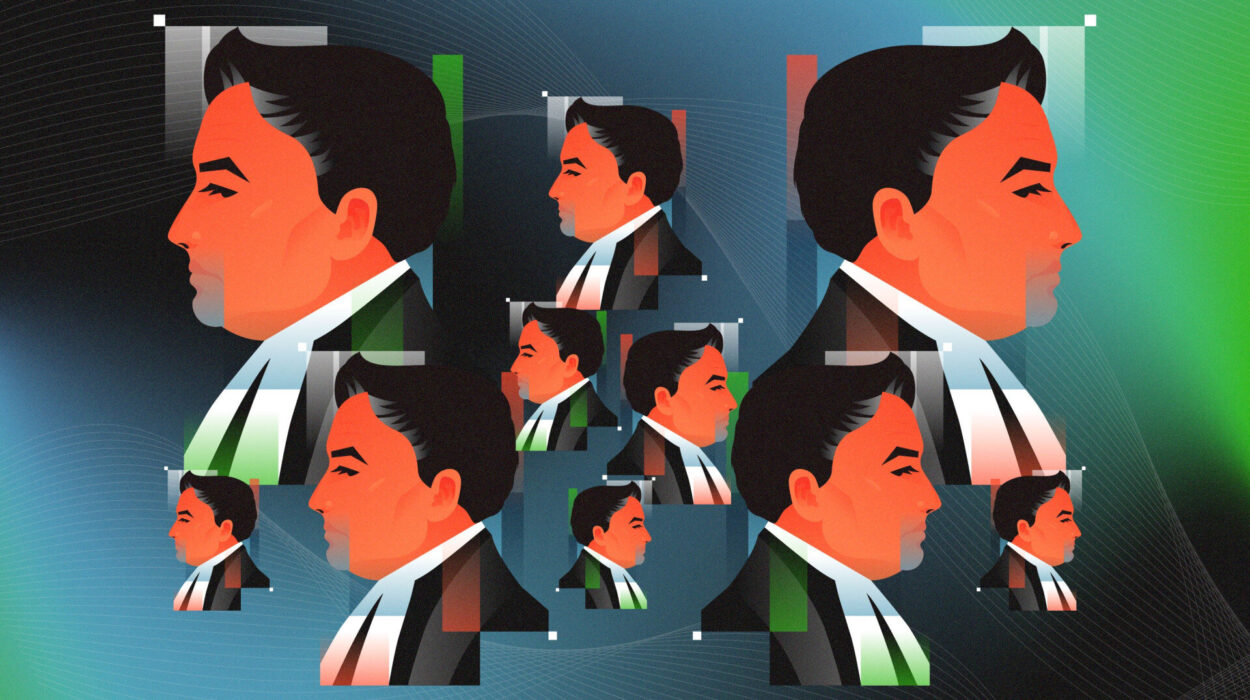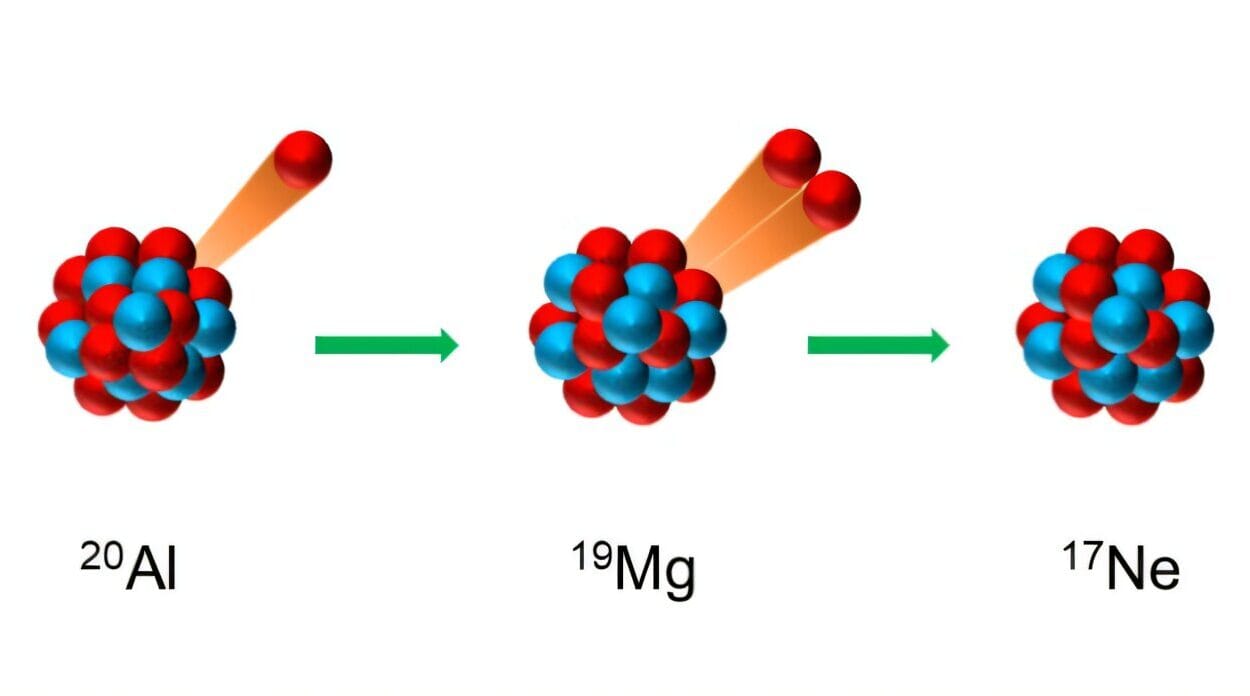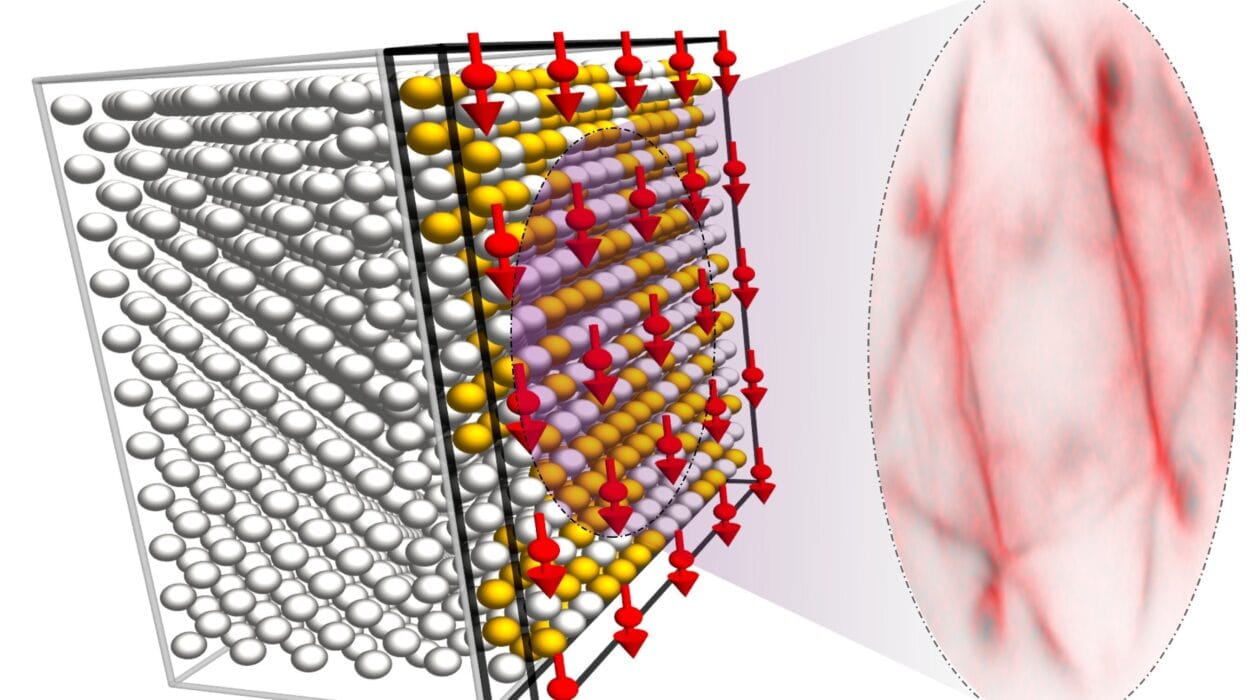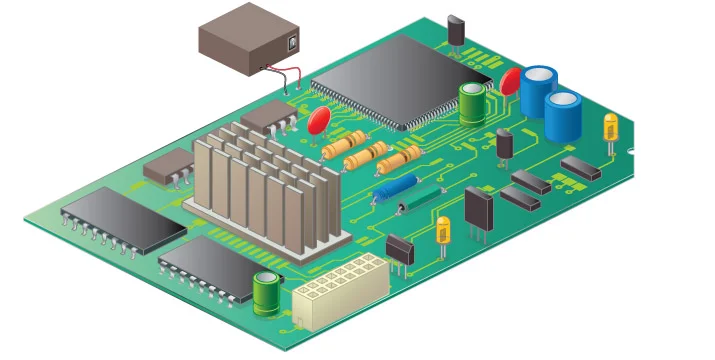Picture yourself at a busy pedestrian crossing on a rainy afternoon. The light is red, and people stand still—hesitant, waiting. Then someone, perhaps checking their watch or just impatient, takes the first step off the curb. Suddenly, others follow. A second becomes a third, and within moments, the entire crowd is flowing forward like water breaking a dam. This ripple of human behavior isn’t just a social phenomenon—it’s also a window into a surprisingly similar process happening deep in the realm of physics, invisible to the naked eye.
This week, physicists from the University of Amsterdam and the Advanced Research Center for Nanolithography published groundbreaking findings in Physical Review Letters that reveal how surfaces begin to slide against one another in a way astonishingly similar to crowd behavior. The study, led by Liang Peng, Thibault Roch, Daniel Bonn, and Bart Weber, uncovers a fundamental mechanism of friction that could reshape our understanding of everything from nanoscale devices to catastrophic earthquakes.
The Hidden Struggle at the Surface
At first glance, friction seems simple. Push harder, and it gets tougher to slide something—right? Not quite.
In the team’s carefully designed experiments, a smooth silicon surface was pressed against a rougher one, mimicking countless real-world scenarios where materials touch, grip, and slip. Their goal: to understand how the friction between these surfaces changes when you increase the pressure between them.
What they found upends intuitive thinking. When a low force is applied, the contact between the surfaces is minimal—just a single point, or asperity, is shouldering the load. This lone point resists movement, much like the first person at the crosswalk hesitating to step forward. But as the pressing force increases, more and more of these microscopic asperities come into contact. These are not atoms or molecules, but jagged peaks and valleys—tiny irregularities that make up the “texture” of any material, no matter how smooth it appears.
Here’s where it gets fascinating. When just a few of these asperities begin to slip, they don’t do so in isolation. Like those first bold pedestrians, they encourage others to follow. Slip begets slip. The once-static interface between surfaces begins to move—not because it gets harder, but paradoxically, because it gets easier.
Crowd Dynamics in Solid Matter
This process, which the researchers describe as a kind of collective behavior, is at the heart of why the coefficient of static friction—the ratio describing how hard it is to initiate sliding—can decrease with higher normal loads. In other words, pressing harder doesn’t necessarily make sliding harder. Instead, it can make surfaces more likely to give way together, just like a crowd emboldened by the actions of a few.
To support their discovery, the team developed a simple yet powerful mathematical model. This model captured the dynamics of interacting asperities—how they load, how they resist, and how they suddenly slip in unison. The physics here isn’t just elegant—it’s communal. Each contact point behaves like an individual making a decision, influenced by its neighbors. The model mirrors the tipping point seen in human crowds: a moment when hesitation vanishes, and motion cascades.
Friction on the Edge of Innovation
While the findings are rooted in fundamental physics, their implications stretch across multiple fields and scales.
In the ever-shrinking world of semiconductors, engineers must align and clamp materials with nanometer precision. Often, curved and flat surfaces must be pressed together during manufacturing. These interfaces are precariously close to slipping, and even minor shifts can affect the alignment of tiny components in chips and circuits. The new research provides valuable insight into exactly how and when sliding begins—and more importantly, why.
In this realm, understanding friction is not just academic—it’s practical. Misaligned surfaces can compromise entire batches of microchips. By harnessing knowledge about asperity dynamics, engineers could refine their methods and improve manufacturing accuracy, creating better and more reliable electronic devices.
The Earth Moves in the Same Way
Zoom out, and the stakes get even higher. At the largest imaginable scale, the same frictional principles govern how tectonic plates grind against each other beneath our feet.
Earthquakes originate when massive slabs of Earth’s crust, locked together by friction, suddenly slip past one another. Seismic waves ripple outward, shaking cities, reshaping landscapes, and often causing devastating loss. The same mechanics that determine how silicon slides against a rough surface also influence how continents shift.
Just as asperities collectively slip to initiate surface motion in the lab, entire fault lines may experience a tipping point—a cascade of microscopic slips that lead to massive geological shifts. By better understanding these friction dynamics, scientists may one day improve their ability to forecast earthquakes or at least refine the models that describe where and when they’re most likely to occur.
From the Lab to the Cosmos
It’s not an exaggeration to say that friction governs much of the physical world. From your sneakers gripping the sidewalk, to satellites maneuvering in orbit using tiny adjustments, to robot fingers gently picking up fragile objects—sliding forces are always at play. But despite its ubiquity, friction remains one of the most complex and least understood phenomena in physics.
The Amsterdam team’s work cuts through some of that complexity. By revealing that friction behaves like a social network—where individual elements influence one another—they have bridged a conceptual gap between material science and behavioral dynamics. This is the kind of interdisciplinary insight that opens new doors in robotics, automation, mechanical design, and beyond.
Imagine designing artificial limbs or surgical tools that mimic human grip more precisely, because we finally understand the exact moment when grip transitions to slip. Or consider space exploration, where machines must anchor themselves to alien terrain. With enhanced friction models, we can make smarter, safer decisions—both here and far from home.
A Story of Surfaces and the Science of Trust
At its heart, this discovery is about thresholds—moments when everything changes. It’s a story about systems on the edge, about how a small nudge can trigger a cascade, whether it’s a few grains of sand starting an avalanche or a cluster of atoms beginning to slide.
The pedestrian at the crosswalk steps forward not because the light changed, but because the network of trust around them shifted. In materials, the same principle holds. Individual asperities don’t make the choice to slip in a vacuum. They’re influenced—pressed by neighbors, shaped by load, and ultimately tipped into motion by collective force.
It’s a poetic reminder that even in the world of cold, hard physics, behavior is relational. Surfaces don’t act alone. They engage. They respond. They move together.
And sometimes, to move the world—or even just a piece of silicon—it takes only a few brave points of contact to start the journey.
Reference: Liang Peng et al, Decrease of Static Friction Coefficient with Interface Growth from Single to Multiasperity Contact, Physical Review Letters (2025). DOI: 10.1103/PhysRevLett.134.176202. On arXiv: arxiv.org/html/2409.04280v1






